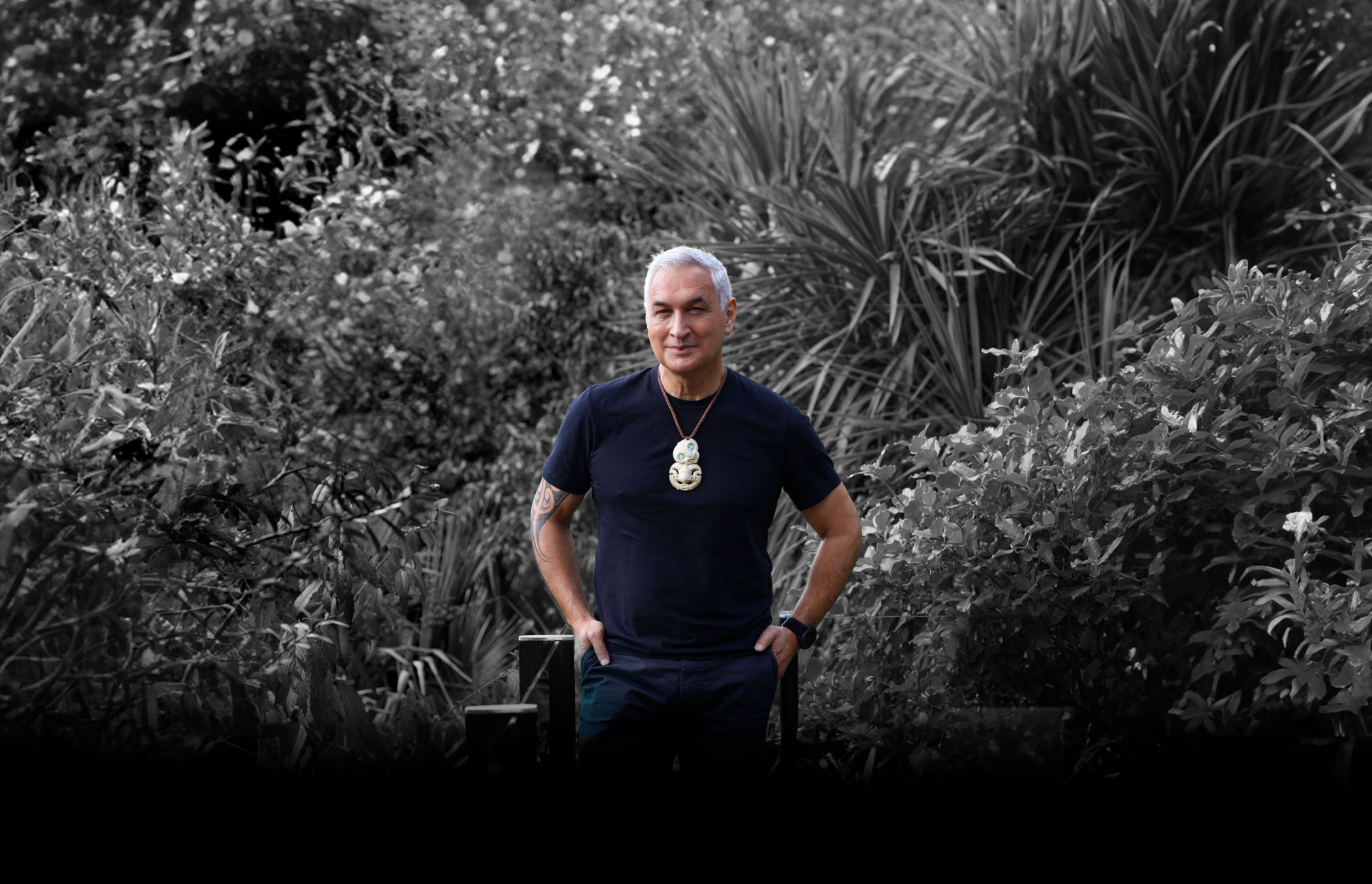

About Our Aotearoa
Our Aotearoa is a collective movement of our people – everyone in New Zealand standing in unity to honour and protect Te Tiriti o Waitangi, for the future Aotearoa that our kids, and their kids, will inherit.
Why Te Tiriti o Waitangi is important to us all
Our Aotearoa believes in a future where Te Tiriti is embraced as part of our national identity and is a source of pride – recognised as a living document that formed this place we all call ‘home’.
Te Tiriti o Waitangi in simple terms
It’s important to understand that there are two documents – Te Tiriti o Waitangi, written in Māori, and the Treaty of Waitangi, written in English. There are differences between them.
| Te Tiriti | The Treaty | |
|---|---|---|
| In 1840 | Te Tiriti is what rangatira and the Crown agreed. | The Treaty was not a translation of Te Tiriti and it had some very important differences. |
| Article 1: Kāwanatanga | The Queen promises to govern over British people in Aotearoa. | The Queen will have sovereignty over Aotearoa. |
| Article 2: Tino Rangatiratanga | Māori will keep total authority over their land, resources and way of life. But if Māori want to sell any land, they promise to only sell to the Queen. | Māori will keep their land and resources (way of life is not mentioned). But if Māori want to sell any land, they promise to only sell to the Queen. |
| Article 3: Protection, Citizenship | The Queen promises that Māori will have her protection, just like British citizens. | The Queen promises that Māori will have her protection, just like British citizens. |
| Modern Day | In 2014 the Waitangi Tribunal confirmed that only Te Tiriti was agreed to. | Politicians and the courts keep trying to clarify and simplify the Treaty, when the text itself is pretty straightforward. |
FAQs: Questions and Answers
Click on a question to show answer
What are the Treaty Articles (and what do they promise)?

The articles are the clauses in both the Māori and English versions of the treaty, setting out what the signatories agree to, and what the Crown promises. But there are clear differences between them.
Article 1 of Te Tiriti o Waitangi (the text in te reo Māori) gives the Crown the right of kāwanatanga over its subjects. There is no direct Māori translation for “kāwanatanga”, but it means the government has the right to make laws for its people and the right to govern. Importantly, Article 1 of Te Tiriti was always intended to be subject to Article 2 of Te Tiriti. That remains the case today.
Article 2 of Te Tiriti o Waitangi recognises the right for Māori to exercise tino rangatiratanga (self-determination, autonomy) over their whenua, kāinga, and taonga katoa – their lands, their homes and all of their treasures. This right had existed in te ao Māori for hundreds of years. Article 2 formalises and acknowledges this right of tino rangatiratanga. Reading the two articles together means although the Crown has rights to govern, there are limits to those rights.
In the English text (the Treaty of Waitangi), the first two articles differ from the text in te reo Māori. Article 1 in English states that Māori ceded all the rights of sovereignty to the Crown, and Article 2 recognises the Māori right of ‘exclusive possession’ over lands, estates, forests, fisheries and other properties. But the English text was never signed by Māori at Waitangi and wasn’t even seen by the majority of signatories. Of over 500 rangatira (chiefs) who signed the document, around 93% signed the text in te reo. The English text was only signed in one location, and those rangatira were never offered the opportunity to sign in te reo. So no Māori leader ever made the choice to sign the document in English instead of signing it in te reo Māori.
But remember, most Māori signatories never saw the English text of the treaty, and more than 90 percent of them signed Te Tiriti. Article 3 of both Te Tiriti and The Treaty is roughly the same. It gives Māori the rights and privileges of British subjects, and offers the Crown’s protection to Māori from other foreign powers.
Why is the Treaty/Te Tiriti important?

The Treaty/Te Tiriti gave the British Crown the right to form their own government in New Zealand and continues to give the modern New Zealand government the right to legitimately govern. Importantly, Te Tiriti sets out conditions for that right to govern – the government gets to exercise the rights of kāwanatanga (governance), as long as the Māori rights of tino rangatiratanga are recognised and upheld.
For individuals, The Treaty/Te Tiriti enables us all to be here in Aotearoa. Te Tiriti welcomes people of all nationalities to live here together peacefully, recognising the existing rights and customs of Māori, but inviting others to be here as well.
What are the Treaty Principles?

The Treaty Principles are different to the Treaty Articles. The Articles are what were signed up to by rangatira in 1840. And we know there were differences between the two versions, and the vast majority of Māori chiefs never saw the English version. In the 1970s and 1980s, the New Zealand government decided a compromise needed to be found between the two versions of the text. The concept of ‘Treaty Principles’ was created, and they represent an attempt to find a middle ground. The concept of Treaty Principles was written into law by Parliament and then over the years the specific content and meaning of the principles has been interpreted on a case-by-case basis, mostly by the Courts and by the Waitangi Tribunal.
One court case in 1986, usually referred to as the New Zealand Māori Council case,– or the Lands case – is seen as particularly significant. It was the first time our highest court had articulated the Treaty Principles. Other cases have expanded further on the principles since then.
The courts are not the only institution that discusses and develops the principles – the Waitangi Tribunal and the government have done so as well. References to the Treaty and Treaty Principles now regularly appear in laws that Parliament passes.
What is the new Treaty Principles Bill?

The Treaty Principles Bill is a proposed law that will be introduced to Parliament this year as part of the government coalition agreement. The stated purpose is to ‘clarify’ the principles of the Treaty of Waitangi, but in reality, the Treaty Principles Bill will substantially change those principles away from their original intent and arguably change Te Tiriti itself. Several experts have said that the proposals represent such a major change to how the Treaty/Te Tiriti are interpreted, that they represent an attempt to erase the Treaty/Te Tiriti.
What will the Treaty Principles Bill do exactly?

While the final text of the Bill is yet to be publicly released, the suggested text involves a significant rewrite of the three articles of Te Tiriti/The Treaty (remembering the Articles are what the Māori chiefs signed in 1840). It changes Article 1 to simply say the Crown has the right to govern. This is a change from Article 1 of Te Tiriti, which grants a more limited power of kāwanatanga to the government.
Most importantly, it completely changes Article 2, reinterpreting tino rangatiratanga as an individual property right held by individual citizens. This is significantly different from what Article 2 of Te Tiriti says – tino rangatiratanga is a collective right grounded in tikanga Māori. If the bill was to become law it would completely change the original meaning, intent and words of Article 2 of Te Tiriti.
The likely text of Article 3 in the Treaty Principles Bill will say that all New Zealanders are equal before the law. Again, this is not what Te Tiriti says.
The Treaty Principles Bill is likely to also propose that these changes be voted on in a referendum. If there is a referendum, it will mean non-Māori people (who are in the majority in New Zealand) will be asked whether our country should essentially erase the rights of Māori people (who are in the minority) under Te Tiriti o Waitangi. Does that seem fair?
Do all New Zealanders have equal rights under the Treaty/Te Tiriti?

The Treaty/Te Tiriti gives non-Māori the right to live here in New Zealand. Māori right to live here and to have our rights upheld is not given by Te Tiriti. The human rights protections enshrined within legislation such as the Bill of Rights Act are consistent with Te Tiriti, and numerous pieces of legislation and policy have been enhanced through the inclusion of Tiriti clauses, but we are still far from fully recognising Te Tiriti in how we do government. The Treaty Principles Bill will take us further away, not closer to that goal.
What Te Tiriti o Waitangi also does is set out the conditions for the government to exist in this country. This happens everywhere in the world. Here in New Zealand, the government has some additional obligations to the original inhabitants of the country. Those are not ‘extra rights’, and they in no way detract from the rights that everyone has.
In many ways today, the obligation to uphold the equal rights of Māori people falls well short. For example, Māori life expectancy is around seven years lower on average than it is for non-Māori people. Māori children are more likely to live in poverty, and are more likely to be let down by the education system. The realisation of ‘equal rights’ is among the things Te Tiriti advocates are hoping for. But the current reality is many of the rights that all New Zealanders have are less likely to be upheld for Māori people. Te Tiriti can be one tool to change that.
What does the Treaty/Te Tiriti have to do with you?

Upholding Te Tiriti o Waitangi can be good for everyone, not just Māori. For example, in the natural environment, upholding Te Tiriti would likely lead to better outcomes, such as cleaner waterways. Māori knowledge often offers a unique perspective that can be used to help solve those big problems, and Te Tiriti can provide a way to bring that knowledge to the table. An example of that was during the COVID-19 pandemic, Māori health providers were among the most efficient and comprehensive providers of vaccinations to Māori and non-Māori alike, as they knew best what their communities needed. There are many other examples of Te Tiriti benefiting non-Māori people as well, not just Māori.
Te Tiriti is also something that many New Zealanders think should be upheld because it’s the right thing to do. The many breaches of Te Tiriti over the years have disadvantaged Māori, and a lot of New Zealanders simply believe that is unfair.
Why is Te Tiriti important for our future?

Te Tiriti protects many of the things that make us unique as a country and of which New Zealanders are rightly proud. Our lands and waterways, our climate, te reo Māori and other aspects of Māori culture are all things New Zealanders celebrate on the global stage and that Te Tiriti o Waitangi protects.
We can also take pride in Te Tiriti itself. Despite our difficult history at times, all New Zealanders should celebrate having an agreement that protects indigenous peoples’ rights as a cornerstone of our modern country. Te Tiriti is also a tool to help us tackle some of our country’s greatest challenges, like climate change or inequality. Te Tiriti o Waitangi allows us all to call this place home. That’s pretty special, and something many people say is worth preserving.
Is a discussion on the Treaty/Te Tiriti divisive?

Discussion itself is great and really important. Unfortunately, discussions about Te Tiriti are often based on myth or misinformation.
For much of our country’s history, Te Tiriti has been ignored. or we learned inaccurate things about it at school. Important context was often missing – for example, that there were two versions of Te Tiriti/The Treaty and that few people actually signed the English version. Some of us didn’t learn about Te Tiriti at all growing up.
So it’s important we’re all able to discuss Te Tiriti, but we also have to recognise that a lot of us have gaps in our understanding of Te Tiriti, which affects those discussions.
Discussions about Te Tiriti based on misconceptions or misinformation can be divisive. Sadly, there is also racism towards Māori in society which can increase that divisiveness. We need to ensure when we’re having discussions or debates about Te Tiriti, they are grounded in facts and mutual respect.
If there is a referendum, we also have to ask whether it’s appropriate for a majority population to hold a vote on the rights of a minority group, especially when so many of us grew up with inaccurate information about the issue being voted on. So ultimately, discussion itself is a good thing– but it needs to be factual and it needs to be respectful.
Should a government be able to rewrite the Treaty/Te Tiriti?

No. Te Tiriti is an agreement between Māori and the Crown, and the Crown side of that agreement (which the government represents) cannot walk away from it on their own. Te Tiriti is a promise the government is bound to honour and can’t just ignore. Any attempt to rewrite the Treaty/Te Tiriti would need the consent of the parties to the original agreement. That is the case (and always has been) for all governments, not just the government of the day.
Does the Treaty/Te Tiriti take something away from you (or your children)?

The Treaty/Te Tiriti doesn’t remove the rights of anyone and never has. It sits alongside several other laws which also uphold the rights of all New Zealanders, or the rights of particular groups. These include constitutional laws (such as the Bill of Rights Act), ordinary laws (such as the right to an education in the Education and Training Act), and international laws (like laws protecting the rights of women or people with disabilities).
Human rights laws often identify particular groups of people in need of extra protection, but that doesn’t mean other people miss out. Te Tiriti o Waitangi is similar; it protects people’s rights, and in many cases, it can enhance other laws.
How can the Treaty/Te Tiriti bring New Zealanders together?

The Treaty/Te Tiriti can be an inclusive document providing the foundation for a modern New Zealand we can all be proud of – one that invites and celebrates diversity, protects the things we value, upholds our rights as citizens, and also acknowledges Māori as the original inhabitants of this land. Te Tiriti can unite us much more than it can divide us – it enables all of us to call this place home, and to belong here. It can help preserve many of the things we are proud of, like te reo Māori and Māori culture, without anyone missing out. It can be the cornerstone of the national identity we embrace on the global stage. It’s one of the many things that makes us unique as a country – no place in the world has anything quite like it, and that’s something we can all celebrate.
Did Māori cede sovereignty to the Crown?

No. The vast majority of Māori people have always maintained Māori never ceded sovereignty when Te Tiriti was signed in 1840. The Waitangi Tribunal confirmed that in 2014 following arguably the most comprehensive historical research undertaken into what happened at Waitangi in 1840. That sovereignty was never ceded makes sense, when you consider that most rangatira signed the text in te reo Māori, which preserves Māori sovereignty rather than cedes it.
It also makes sense when you consider that there were around 2,000 non-Māori people in this country when Te Tiriti was signed, compared to around 80,000 Māori. Practically, there would have been no incentive for Māori to cede sovereignty when they so vastly outnumbered non-Māori. Some have argued that even the English text of Te Tiriti didn’t intend for Māori sovereignty to be ceded as it was later interpreted.
Sovereignty also cannot be ceded under tikanga Māori in the way that it can be under English law. One of the closest concepts equivalent to sovereignty for Māori is mana, and mana cannot be signed away in a contract. Mana does not come from a position or title; it comes from a range of sources including the land itself (this is where the term ‘mana whenua’ comes from). Under tikanga Māori, it is essentially impossible to ‘cede’ mana, and therefore sovereignty, in the way it has sometimes been claimed happened in 1840. The late constitutional lawyer Moana Jackson once said that to believe Māori ceded sovereignty in 1840 requires “a profound suspension of disbelief.”
Is there anything else that helps understand the intentions of the signatories to Te Tiriti?

One of the things giving crucial context to the lead-up to Te Tiriti – is He Whakaputanga, a document signed in 1835 at Waitangi by 34 rangatira, and then signed around the country by 18 others. The full name of the document is He Whakaputanga o te Rangatiratanga o Nu Tireni – the Declaration of Independence of the United Tribes of New Zealand. He Whakaputanga affirmed the mana, sovereignty and independence of Māori people in New Zealand just five years before Te Tiriti was signed. Most of those rangatira went on to sign Te Tiriti. It is concrete evidence of their intentions to maintain and assert their mana, and it sheds further doubt on the claim Māori would have gone on to cede their sovereignty just a few years after declaring their independence. Many experts, including the Waitangi Tribunal, have said that it is impossible to fully understand Te Tiriti without understanding He Whakaputanga, as the latter provides crucial context for what happened at Waitangi in 1840.
Where can I find out more about the Treaty/Te Tiriti?

The Spinoff published a great list of Treaty/Te Tiriti related resources in January which you can find here. It has resources at all different levels, from ‘Treaty 101’ for those just beginning to learn, to longer material for those keen to know more.
Here are some podcasts which are worth a listen:
Te Tiriti Kōrero – Pakihere Rokiroki (Podcast Collection)
For those interested in reading about the future of Te Tiriti and its place in Aotearoa, an essential starting point is the Matike Mai Report, which can be found here.
Finally, not everyone knows that if you’re in Wellington, you can see Te Tiriti at an exhibition in the National Library called He Tohu. He Tohu also has information about He Whakaputanga, and the website has some great summaries too.
How can you give feedback on the Treaty Principles Bill?

The timing of the Treaty Principles Bill has not been announced yet, but it has been suggested it may be introduced to Parliament during 2024. When that happens, you will have the opportunity to share your views with the select committee responsible for the Bill.
A select committee is a group of MPs responsible for hearing public feedback about a proposed law change and reporting back to Parliament with any recommendations they have on proposed changes based on that public feedback. Everyone has the right to participate in that process and we encourage you to share your views. We’ll be providing further details on this website when the timing and the content of the Treaty Principles Bill are made available.




